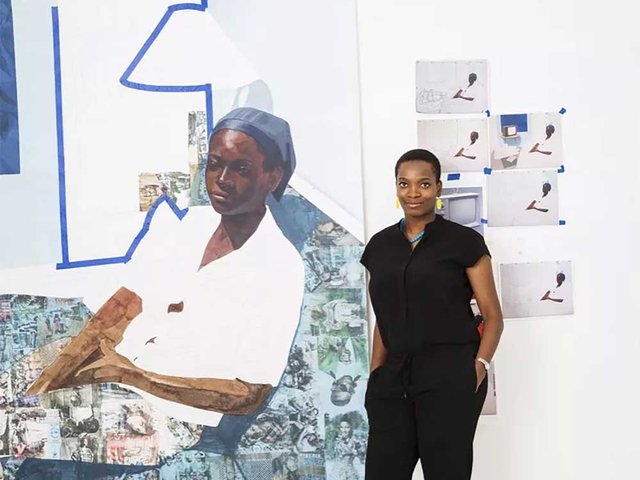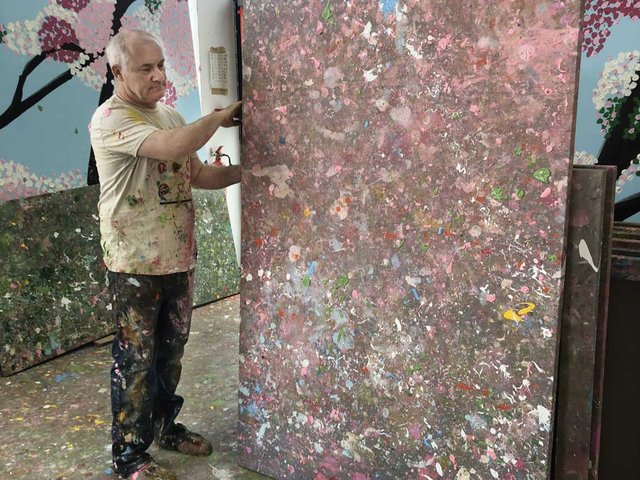Greenhouse Auctions, a new online-only auction house designed to reduce speculation on emerging artists’ markets, launches today. Consigning solely from small to mid-sized galleries and directly from artists, the primary market sales platform will not publish final sale prices, though estimates will be publicly accessible.
Each Greenhouse sale will provide a curated, cross-disciplinary selection of fine art and objects, most of which are valued at $20,000 or under to provide an approachable entry-point for new collectors as well as artists whose markets are growing quickly.
The venture is founded by Shlomi Rabi, the former Christie’s Vice President and Head of the Photographs Department for the Americas, who says that he wanted to provide sales opportunities that “aren’t about wealth and legacy” and instead “reflect a community ethos that nurtures and diversifies the next generation” of collectors, artists and dealers.
“I am all for transparency in the marketplace and auctions are key to that," Rabi says. "But in the contemporary market, there are major loopholes that are often taken advantage of,” often to the detriment of emerging and minority artists, whose works are sometimes sold at lower prices and then “flipped” for a significantly higher price. He adds that while buyers often remain anonymous, young and “hot” artists are at their most visible—and often vulnerable—when a work comes up for sale at auction.
Auction success comes with little upshot for younger artists. Some cannot consistently meet the demands for their work and face burnout, or their dealers risk having the artist poached by a larger gallery, Rabi explains, adding that “smaller galleries don’t have the muscle and resources to go after some of these collectors—it takes a big team”.
Neither artist nor dealer will see any profits from a traditional auction sale, either. Moreover, if an artist’s work fails to meet its auction estimate or does not sell, it can unduly affect the market value for other works by the artist.
Through Greenhouse, artists can sell their works directly as can dealers who want to reach new clients for artists’ works that perhaps simply did not sell in a show or fair. “There’s no reason that both galleries and artists should be sitting on inventory. This gives them another avenue to sell directly to a buyer,” Rabi says, adding that part of his service is putting buyers directly in contact with the sellers, if desired.
Sales are low-risk as there is no consignment cost if the work does not sell. Sellers keep 95% of the hammer price of a sold work, while collectors will pay a 20% buyer’s premium. The 5% fee assessed from sellers will be donated in its entirety toward the establishment of a new scholarship with the Thurgood Marshall College Fund, which benefits students studying art history across more than 40 historically Black colleges and universities in the US.
“The art market as a whole needs more diversity—historians, specialists, critics, dealers as well as artists. That there’s not a single Black specialist at any of the major US auction houses is staggering,” Rabi says. “And really, who wants to participate in the market if they don’t see themselves adequately represented in it? This is a grassroots attempt to empower a community that’s been underserved in this industry.”
The platform’s inaugural sale in December, Sourdough, will bring together works created during the pandemic and in lockdown. Participating galleries include here (Pittsburgh), LnS Gallery (Miami), and Meislin Projects (New York), and artists featured include Israeli artist Shai Azoulay, Molly A. Greene, T. Eliott Mansa, Cuban artist William Osorio and Venezuelan artist Tony Vazquez-Figueroa. The sale will also feature works created specifically for Greenhouse by artists including Nick Farhi, Aaron Elvis Jupin, Erin Loree and Grear Patterson.




